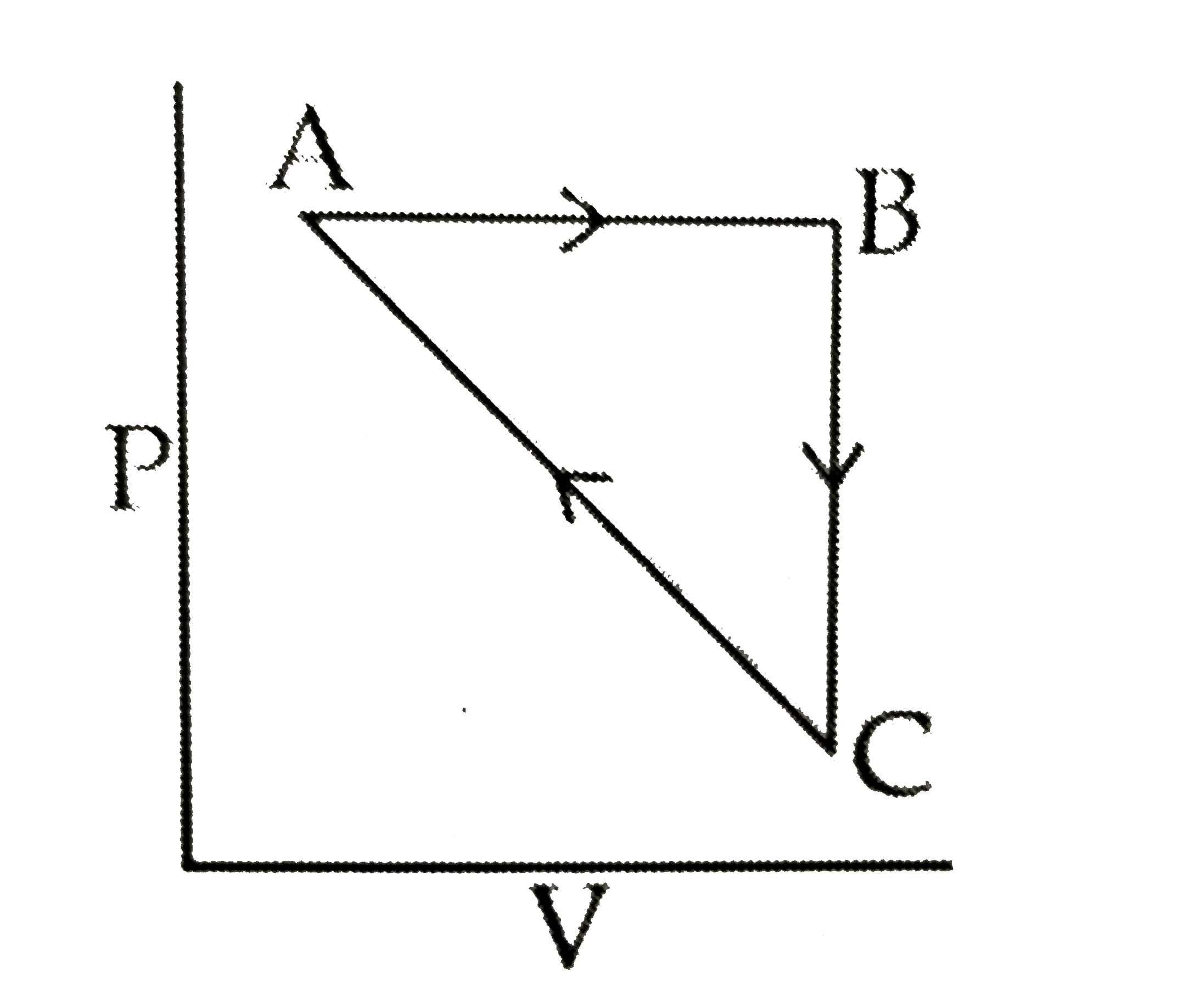An ideal gas undergoes a cyclic process as shown in figure
δUBC = −5KJmol−1, qAB=2KJmol−1, WAB=−5KJmol−1, WCA=3KJmol−1
Heat absorbed by the system during process CA is:.

−5kmol−1
+5kJmol−1
−18kJmol−1
−18kJmol−1
The correct Answer is:B
Step by step video & image solution for An ideal gas undergoes a cyclic process as shown in figure delta U_(BC) = -5 KJ mol^(-1), q_(AB) = 2 KJ mol^(-1), W_(AB) = -5 KJ mol^(-1), W_(CA) = 3 KJ mol^(-1) Heat absorbed by the system during process CA is:. by Chemistry experts to help you in doubts & scoring excellent marks in Class 12 exams.
Topper's Solved these Questions
Similar Questions
Knowledge Check
- Question 1 - Select One
A cyclic process for an ideal gas is shown in figure . Given WAB=+700J,WBC=+400J,QCA=−100J.
_E01_231_Q01.png)
Find WCAA−500JB500JC400JD−400J - Question 2 - Select One
Few values of enthalpies are given below: O=−141KJmol−1
F=−328KJmol−1
S=−200KJmol−1
Cl=−349KJmol−1 What do these values show?AIonisation enthalpyBBond enthalpyCElectron gain enthalpyDHydration enthalpy - Question 3 - Select One
A→B,ΔH=−10KJmol−1,Ea(f)=50KJmol−1, then Ea of B→A will be
A40KJmol−1B50KJmol−1C−50KJmol−1D60KJmol−1
The first four ionization enthalpies of an element are 578kJmol−1,1817kJmol−1,2745kJmol−1, and 11575kJmol−1. The element is
View Solution550kJcycle−1 work is done by 1 mol of an ideal gas in a cyclic process. The amount of heat absorbed by the system in one cycle is
View SolutionFollowing are the values of EaandΔH for three reactions carried out at the same temperature :
I:Ea=20kJmol−1,ΔH=−60kJmol−1
II:Ea=10kJmol−1,ΔH=−20kJmol−1
III:Ea=40kJmol−1,ΔH=+15kJmol−1
If all the three reaction have same frequency factor then fastest and slowest reactions are :View SolutionFor a reaction A→B,Ea=10kJmol−1,ΔH=5kJmol−1. Thus, potential energy profile for this reaction is:
View SolutionGiven that the food energies of :N≡N is 946kJ mol−1 , H-H is 435 kJ mol−1,N−N is 159 kJ mol−1, and N-H is 389 kJ mol−1 , the heat of formation of hydrazine in the phase in kJ mol−1 is :
View Solution

